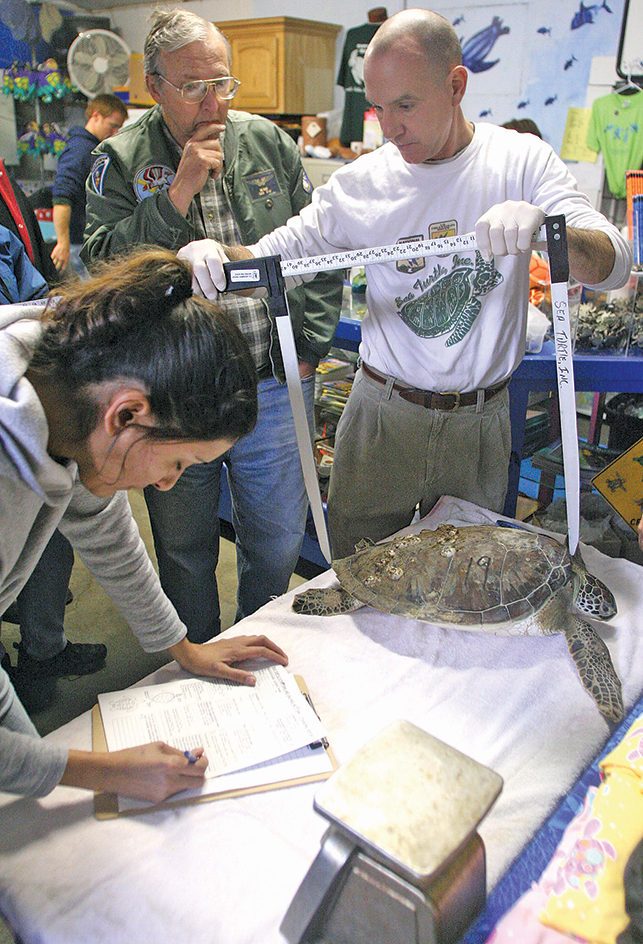Green sea turtle is a turtle that lives in warm ocean waters. It is found in the Indian Ocean, the Mediterranean Sea, the Atlantic Ocean, and the Pacific Ocean. It does not live in the cold waters near the north and south poles. The green sea turtle is found on or near the beaches of more than 140 countries. It is also known as the green turtle. It is named for the greenish coloration of its fat, not for the color of its shell or scales.
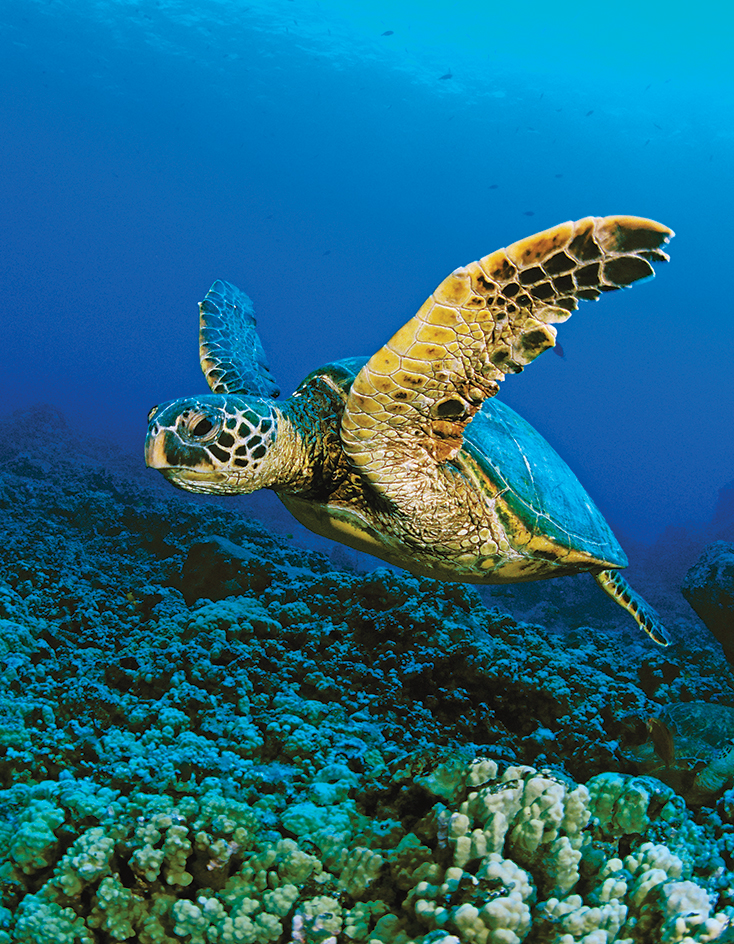
The green sea turtle has a small head and large eyes. It has paddlelike flippers for swimming. The shell is teardrop-shaped and pointed at the back, with smooth scutes (bony plates). The shell is green, yellow, or brown in color and can have radiating stripes—that is, stripes that fan out from the middle. Green sea turtles grow to be about 4 feet (1.2 meters) long.
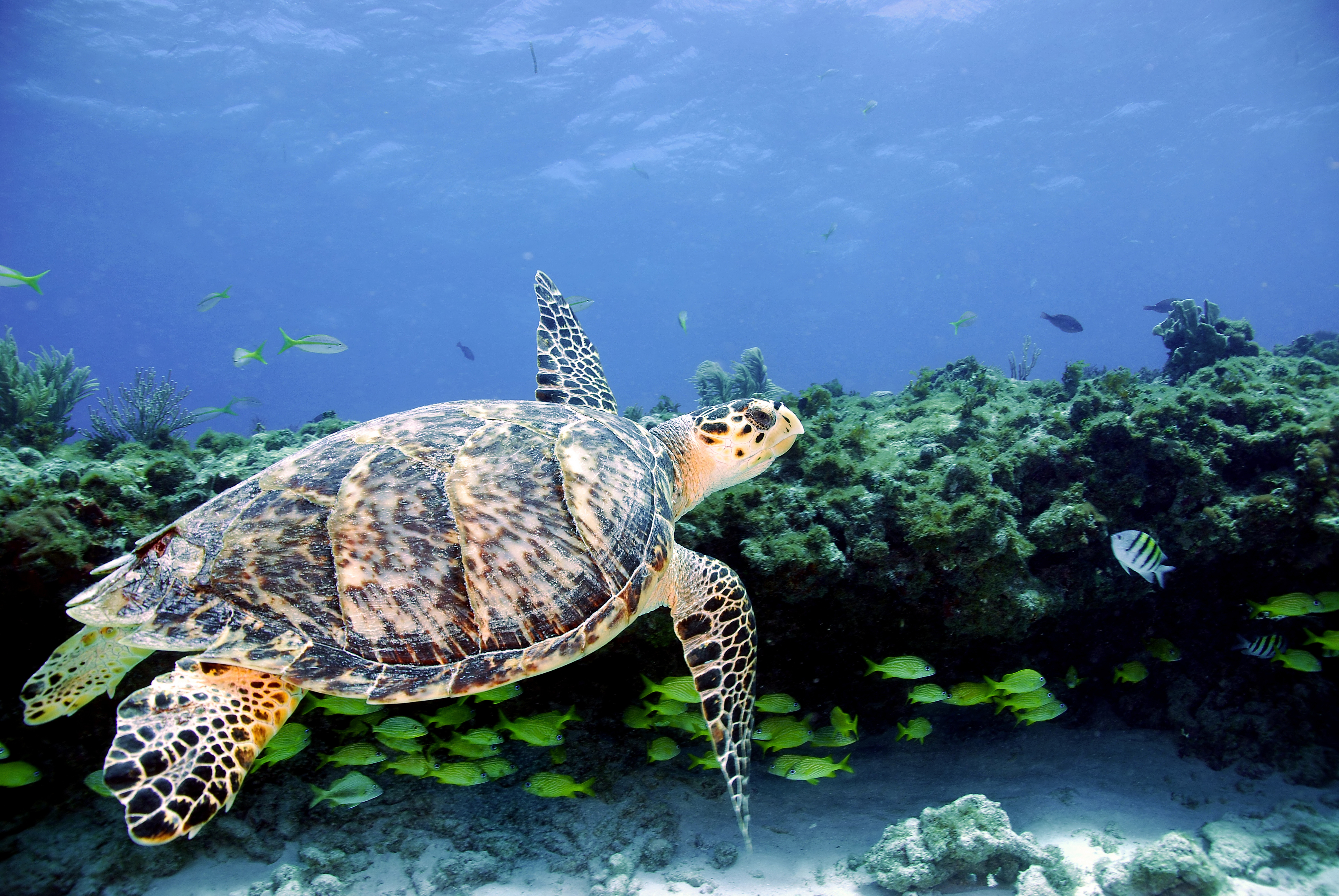
Green sea turtles breed every 2 to 4 years. The nesting season varies in different parts of the world. Female green sea turtles usually return to the beach where they were born to lay their eggs. They use their flippers to dig a hole in the sand. Then, they lay their eggs in the hole and cover the eggs with sand before returning to the sea. Female green sea turtles usually lay around three clutches of eggs during one nesting season. Each clutch can include up to 200 eggs. It takes 45 to 75 days for the eggs to hatch. The hatchlings immediately leave the nest and go into the ocean. Green sea turtles can live to be much older than 50 years.
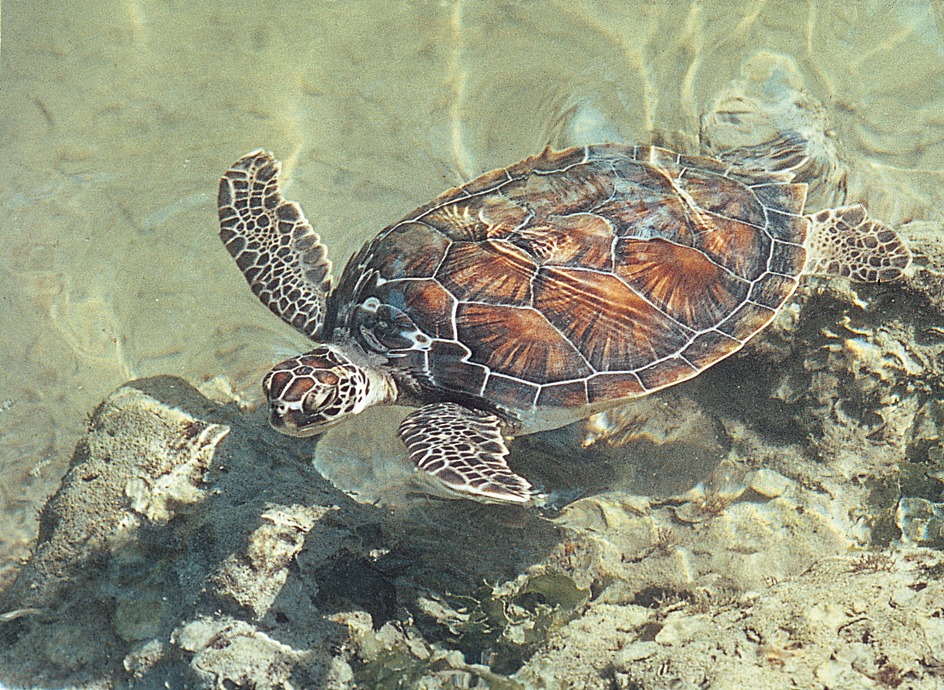
Young green sea turtles are omnivores—that is, they eat both plants and animals. They eat small invertebrates (animals without backbones). They also eat seaweed and other algae and marine plants called sea grasses. As they grow older, they eat mainly plants or plantlike organisms. Green sea turtles are usually found in shallow waters that have plenty of sea grasses and seaweed. However, they also spend much of their lives migrating.
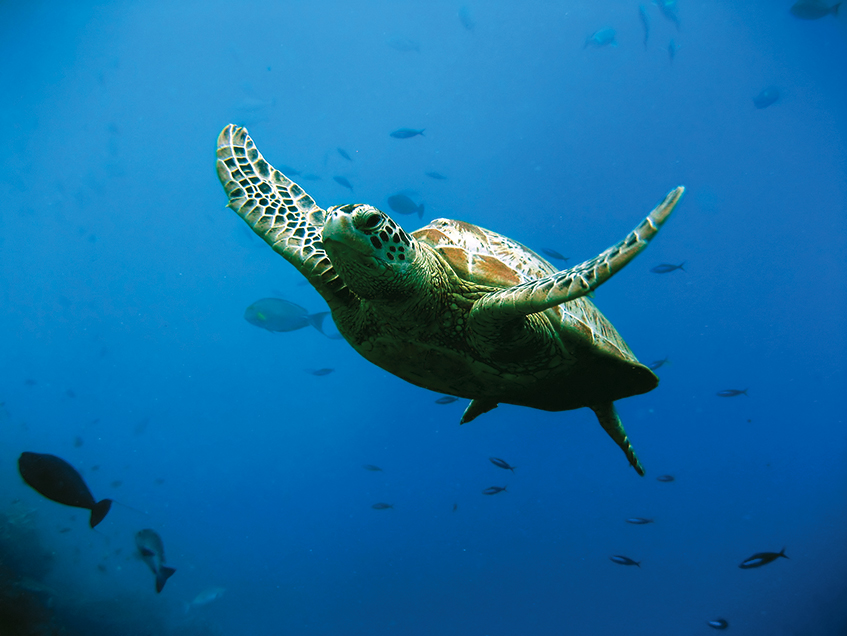
An adult green sea turtle’s shell protects it from most natural predators. However, adults are still hunted by sharks. Eggs and hatchlings are eaten by many land and sea predators, including crabs, fish, foxes, and sharks. The green sea turtle is endangered because humans collect their eggs from beaches and hunt them for meat. In addition, residential and tourist development on beaches can disrupt green sea turtles from laying their eggs.
Green sea turtles are also threatened by global warming, an observed increase in Earth’s average surface temperature. The temperature of the sand in a green turtle nest determines the sex of the hatchlings. Warmer temperatures favor female hatchlings, and cooler temperatures favor male hatchlings. The ideal sand temperature results in a clutch that has about as many males as females. Due to global warming, some beaches where green sea turtles lay their eggs have hotter sand during the nesting season. As a result, green sea turtle clutches in these areas are all or mostly female. This imbalance could make it harder for green sea turtles to reproduce in the future. 